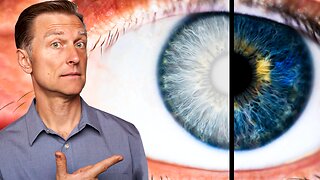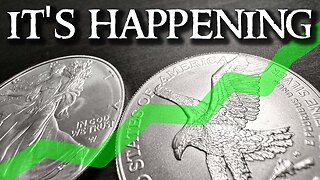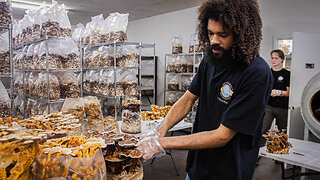Gallstones vs Kidney Stones: A Common Cause of Kidney Stones & Gallstones – Dr.Berg
What do gallstones and kidney stones have in common? Find out.
KETO RECIPES CHANNEL: https://www.youtube.com/channel/UCnAGH-jp4YXl30rir1BPrxA/
Timestamps:
0:00 What are gallstones and kidney stones?
1:12 What gallstones and kidney stones have in common
2:35 More on kidney stones
3:18 The microbiome and bile salts
4:00 What to do
Today I want to cover gallstones vs. kidney stones. A gallstone is a cholesterol stone caused by a lack of bile. A gallstone can be a good indicator that you have low bile. A kidney stone is more of a calcium stone. Kidney stones can create a lot of pain, and they can obstruct urine flow.
With different types of malabsorption problems, there is actually a high risk of gallstones and kidney stones.
Bile binds with calcium and oxalates. Bile may help decrease the risk of building up calcium oxalates in the kidney. There can be a bile deficiency present when a person has gallstones or kidney stones.
Fiber could also decrease the risk of kidney stones. Vegetables contain fiber, magnesium, and potassium, and may be helpful in decreasing the risk of kidney stones.
If you’re at risk for kidney stones, it’s important to consume at least 2.5 liters of fluids every day.
Your liver and your friendly bacteria make bile salts. If there is a problem with your microbes, you could become deficient in bile, which could increase your risk of both kidney stones and gallstones.
What to do to help decrease the risk of gallstones and kidney stones:
• Make sure you have fiber
• Have at least 2.5 liters of fluids every day
• Take care of your microbiome
If you’re developing a kidney stone or gallstone, you may also want to start taking purified bile salts.
Dr. Eric Berg DC Bio:
Dr. Berg, age 58, is a chiropractor who specializes in Healthy Ketosis & Intermittent Fasting. He is the author of the best-selling book The Healthy Keto Plan, and is the Director of Dr. Berg Nutritionals. He no longer practices, but focuses on health education through social media.
Follow us on FACEBOOK: fb.me/DrEricBerg
Send a Message to his team: m.me/DrEricBerg
ABOUT DR. BERG: https://bit.ly/3hU9qtT
Disclaimer:
Dr. Eric Berg received his Doctor of Chiropractic degree from Palmer College of Chiropractic in 1988. His use of “doctor” or “Dr.” in relation to himself solely refers to that degree. Dr. Berg is a licensed chiropractor in Virginia, California, and Louisiana, but he no longer practices chiropractic in any state and does not see patients so he can focus on educating people as a full time activity, yet he maintains an active license. This video is for general informational purposes only. It should not be used to self-diagnose and it is not a substitute for a medical exam, cure, treatment, diagnosis, and prescription or recommendation. It does not create a doctor-patient relationship between Dr. Berg and you. You should not make any change in your health regimen or diet before first consulting a physician and obtaining a medical exam, diagnosis, and recommendation. Always seek the advice of a physician or other qualified health provider with any questions you may have regarding a medical condition.
Thanks for watching! I hope this helps you better understand gallstones and kidney stones and what they have in common.
-
 8:01
8:01
Dr. Eric Berg
8 days agoThis Fights Glaucoma?!
8.04K5 -
 37:00
37:00
TampaAerialMedia
1 day agoFlorida's Nature Coast - Weeki Wachee-Crystal River-Dunnellon-Cedar Key
9756 -
 1:16
1:16
scoutthedoggie
2 days agoAirsoft Grenades - This is loud you have been warned
1.02K5 -
 8:17
8:17
Silver Dragons
18 hours agoSilver Price SOARING Today | HUGE Silver News Update, COMEX HEATING UP
1.85K7 -
 39:33
39:33
Mr Reagan
18 hours agoPelosi Publicly Humiliated
2.53K18 -
 13:15
13:15
DepressedGinger
19 hours agoBiden is losing basically every poll...
9.33K66 -
 58:14
58:14
World Nomac
15 hours agoThe Maldives of Thailand|Khao Sok (Thailand's BEST Kept Secret) 🇹🇭
17.3K6 -
 12:54
12:54
Praxis Homesteading and Survival Skills
12 hours agoMost Home Solar is Built WRONG!
22K7 -
 18:43
18:43
Southwest Mushrooms
1 day ago $0.04 earnedGrowing Pioppino Mushrooms and Reishi Harvest | Southwest Mushrooms
22.4K13 -
![I Locked A Scammer Out of His PC! [SYSKEY'D]](https://hugh.cdn.rumble.cloud/s/s8/1/n/E/O/R/nEORr.0kob-small-I-Locked-A-Scammer-Out-of-H.jpg) 12:44
12:44
ScammerRevolts
15 hours agoI Locked A Scammer Out of His PC! [SYSKEY'D]
27.1K2